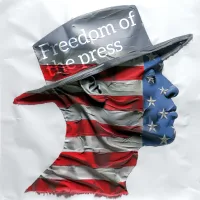There is a bright future ahead for Corning Community College’s Computer Numerical Control Programming students. The future is tech and these programs are fostering growth in a rapidly growing field. — Rep. Langworthy, facebook 3/20/23
“The future is tech” is a platitude; “fostering growth in a rapidly growing field” is hyperbole.
The numeric control concept was developed in the 1950s.4 The first programable machine controls were called Numerical Controls; after 1970 they were more often called Computer Numerical Controls; any distinction is mostly advertising.
When machining something using numerical control, once the job is set up, the machine moves under the control of a program written in advance. Two jobs are involved: one person to write the program (a part programmer) and usually another (a machinist or operator) to operate the machine. Job titles, Machinist and Part Programmer, are very much the same as similar skills are required.
Numerical control was developed with two prime objectives. First, it was hoped that machines would run unattended,3 reducing the cost of labor, taking control of the shop from workers and unions giving it to management, and making production less susceptible to strikes.1 Kurt Vonnegut’s novel “Player Piano” (1952) explores this idea. Second American warplanes in the 1950s were heavy and underpowered compared to Russian MIGs. The Air Force planned to overcome this disadvantage by reducing the weight of airframes, which required complicated machining to create featherlike structures. The Air Force invested heavily in the development of numerical controlled machines.
The nightmare Vonnegut foresaw in “Player Piano2” never materialized. There will be manufacturing jobs for machinists and part programmers in the foreseeable future. Whether this will be a rapidly growing field or not depends on how successful our government is in returning manufacturing here.
Notes:
- David E. Nobel, “Forces of Production,” Knopf, New York, 1984
- The Link Trainer, developed by Ed Link in Binghamton, was based on piano technology.
- A VP at a manufacturing company in Rockford told me that machine operators felt they should stare at the machine while it ran. He preferred they would do something useful.
- John Parsons is credited with the NC concept; Jay Forrester of MIT had a key patent later acquired by Bendix Corp.
https://www.statista.com/statistics/664993/private-sector-manufacturing-employment-in-the-us/


